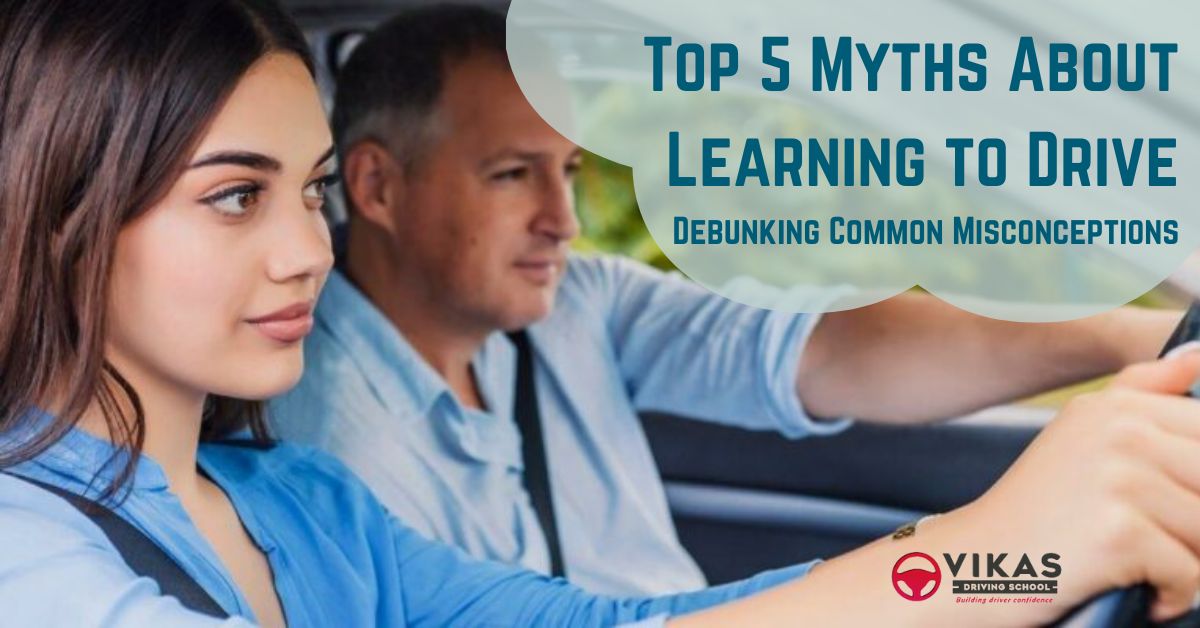Learning to drive is an important life skill that can provide you with freedom and independence. However, there are many myths and misconceptions about learning to drive that can cause confusion and even lead to unsafe driving practices. In this article, we will debunk the top 5 myths about learning to drive and provide you with accurate information to help you become a safe and confident driver.
Myth #1: You Can Learn to Drive Just by Watching Others
One of the most common myths about learning to drive is that you can learn just by watching others. While it’s true that observation can be a helpful learning tool, it’s not enough to become a safe and competent driver. Driving is a complex task that requires a combination of physical, cognitive, and perceptual skills. Without proper instruction, you may develop bad habits or unsafe driving practices that can put yourself and others at risk.
To learn how to drive safely, it’s important to enroll in a professional driving school that can provide you with structured lessons and hands-on practice. A qualified instructor can teach you the rules of the road, safe driving techniques, and how to handle different driving scenarios. Additionally, a professional driving instructor can help you identify and correct bad driving habits before they become ingrained.
Myth #2: Automatic Transmission is Easier to Learn Than Manual Transmission
Another common myth about learning to drive is that automatic transmission is easier to learn than manual transmission. While it’s true that automatic transmission vehicles don’t require the use of a clutch pedal, this doesn’t necessarily make them easier to learn. In fact, some people may find automatic transmission vehicles more difficult to drive because they require less active engagement from the driver.
Learning to drive a manual transmission vehicle may take a little longer than learning to drive an automatic transmission vehicle, but it can provide you with greater control over the vehicle and save you money on gas. Additionally, many people find that driving a manual transmission vehicle is more fun and engaging.
Myth #3: You Don’t Need to Take Driving Lessons if You Have a Relative or Friend Who Can Teach You
Some people believe that they don’t need to take driving lessons in Melbourne if they have a relative or friend who can teach them. While it’s true that having a skilled driver teach you can be helpful, it’s not a substitute for professional instruction. Professional driving schools are designed to provide comprehensive driving instruction that covers everything from the basics to advanced driving techniques.
Professional driving instructors have been trained to teach driving techniques effectively and safely, and they have experience working with students of all skill levels. Additionally, professional driving instructors can provide you with structured lessons that are tailored to your specific needs and learning style.
Myth #4: You Only Need to Learn the Basics to Pass Your Driving Test
Some people believe that they only need to learn the basics to pass their driving test. While it’s true that you need to know the basics, such as how to steer, accelerate, and brake, passing your driving test requires more than just the basics. In fact, many people fail their driving test because they lack advanced driving skills, such as defensive driving techniques and hazard perception.
To pass your driving test and become a safe and competent driver, it’s important to learn advanced driving skills. These skills include defensive driving techniques, hazard perception, and emergency maneuvering. Learning these skills can help you avoid accidents, anticipate potential hazards, and react appropriately to unexpected situations.
Myth #5: Young Drivers are the Most Dangerous Drivers on the Road
Finally, there is a common myth that young drivers are the most dangerous drivers on the road. While it’s true that young drivers are more likely to be involved in car accidents, they are not necessarily the most dangerous drivers on the road. In fact, research shows that the most dangerous drivers on the road are those who are inexperienced or have poor driving habits, regardless of their age.
To become a safe and competent driver, it’s important to focus on developing good driving habits and practicing safe driving techniques. This includes avoiding distractions while driving, obeying traffic laws. And speed limits, maintaining a safe following distance, and staying alert and aware of your surroundings.
In conclusion, there are many myths and misconceptions about learning to drive that can cause confusion and even lead to unsafe driving practices. By debunking these myths and providing accurate information, we hope to help you become a safe and confident driver. Remember, learning to drive is a process that takes time and practice, but with the right instruction and a commitment to safe driving, anyone can become a skilled driver.

